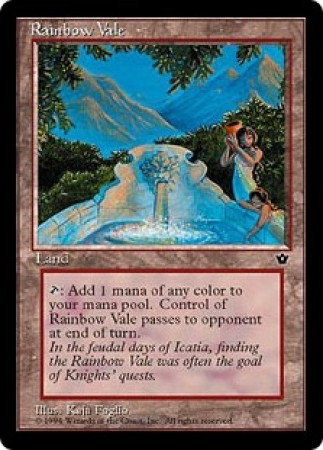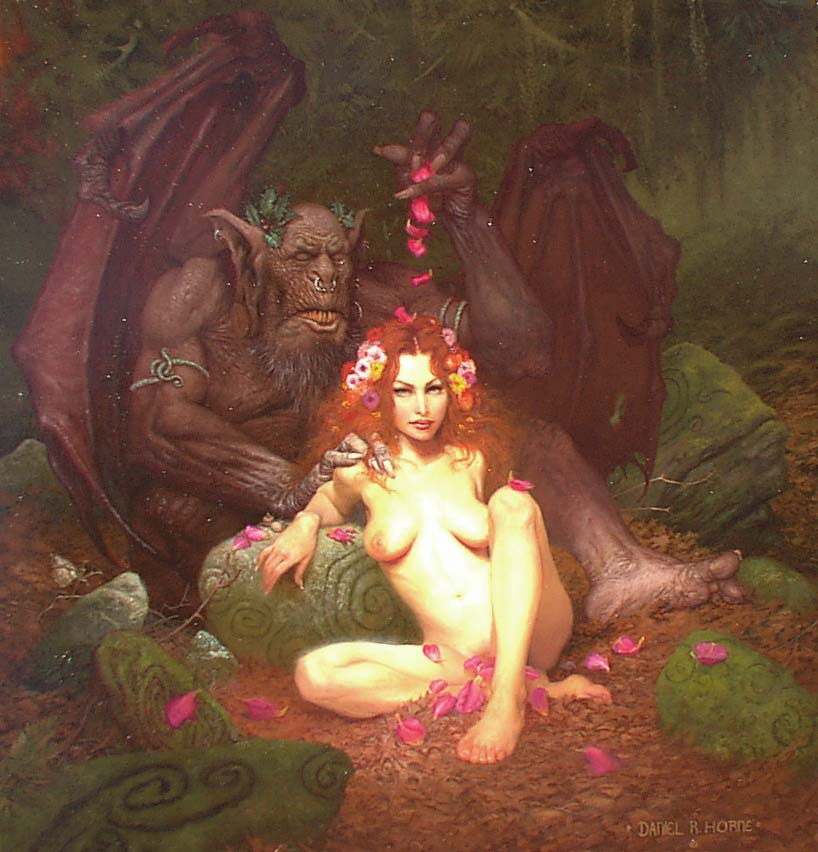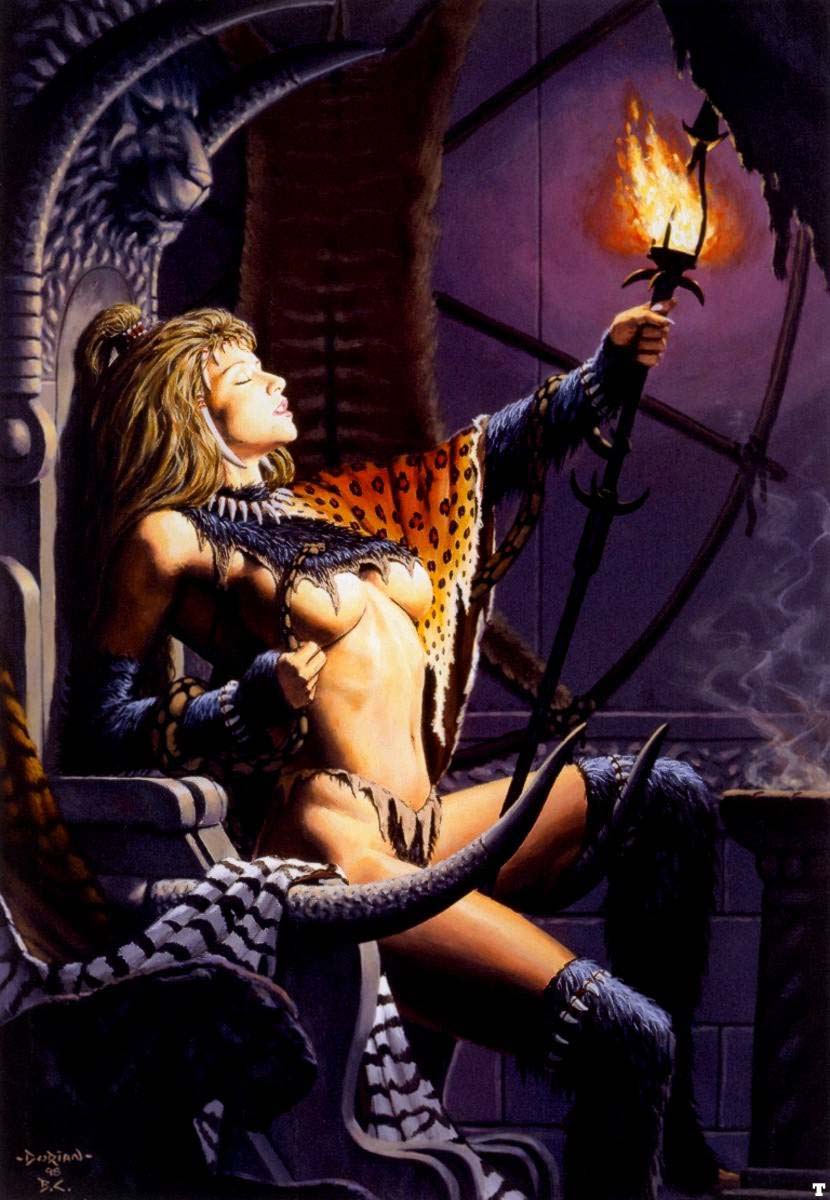Arcadia

++0
<check>
<get a map of Arcadia>
Arcadia

++0
<check>
<get a map of Arcadia>
|
|
|
|
|
|
|
|
|
|
|
|
Arcadia is the plane of well-ordered law
for the common good,
a plane where organization and hierarchies
are used as a tool
with beneficial ends. Its realms are huge
fields of well-tended
crops and orchards, cities laid out in
geometrically perfect
shapes, and mountains unblemished by erosion.
There is day
and night in Arcadia, bu it is the result
of a great sphere set into
he highest peak of the land. This sphere
is half radiant and half
black, as if portions of the Positive
and Negative Material planes
had been brought together with neither
mutual destruction nor
melding into shadow. The revoultion of
this sphere is the same as
a day in the PMP,
but an Arcadian day is dawnless
(light appears suddenly) and duskless
and is divided equally
into night and day.
Arcadia has three layers, though the lower
reaches have not
been explored nor are their contents common
knowledge. The
uppermost layer consists of many well-organized
and defined
realms that share a common gravity<>.
It is a land of gentle showers
and kindly creatures. The flowers are
all colors of the rainbow
and are always found in well-ordered patches
that grow without
needing to be tended.

It is the trees of Arcadia that are most
remarkable. These great
plants grow in neat forests and straight-rowed
orchards. Their
bark is metallic, either copper, gold,
silver, or iron (depending on
the type of tree). Their leaves range
from deep greens to fireball
reds and never fall, though in appearance
they are similar to
Prime planar trees that do lose their
leaves. The fruit of these <link: WG.trees>
is always avail. and has magical abilities.
If picked, such
fruit lasts for 1d10 days before spoiling
(regardless of actions taken <link: WSG.food_spoilage>
to preserve them) and duplicates the effect
of a double-strength
magical potion. The types of potions
are rolled
randomly, on the potion tables either
from the DMG or UA. Each
species of tree grows only one type of
potion fruit.
Arcadia is also the home of peaceful animals:
golden foxes,
coppery hares, and silver-wooled sheep,
as well as all manner of
organized insects such as wasps, bees,
and ants. These creatures
are peaceful in nature and, as they are
natives of the outer
planes, are not affected by Prime Material
spells that normally
affect such beings. Arcadian animals do
not speak, but they have
pupilless white eyes that can pierce any
illusion or phantasm
spell, so they make excellent watch beasts
(in game terms, use
the standard abilities and statistics
for the creature, with the
changes above).
Highly intelligent creatures inhabit the
plane of Arcadia as well:
creatures of the upper planes such as
hollyphants, planetars, foo creatures,
and a few devas. Visiting creatures incl.
shedu and
lammasu (lesser and greater varieties
of both), ki-rin, and titans.
Permanent portals to other planes are few,
but they are in permanent
locations in Arcadia. Generally they are
marked by
arched trellises of white ivory or black
steel. They can be passed
through normally, but once in a while
(1 in 10 chance), the archway
mists over and a field of color appears
similar to that of a color pool.
This pool of color is white if it leads
to Heaven,
black if it leads to Concordant Opposition,
and silvery if it leads to Nirvana.
Ninety percent of the time, both sides
of the archway
lead to the same portal on the other plane,
but 10% of the
time different sides of the archway lead
to different locations
on the same plane.
Arcadia is also a plane of warriors of
good and lawful alignment,
in much the same way that Acheron is the
plane of those
organized for evil ends. Militias of spirit-folk
roam the countryside
looking for those creatures that do not
belong. Good && lawful
creatures are greeted and offered to ride
alongside, while those
of neutrality are stiffly asked their
business, and evil and chaotic
creatures are attacked. As natives, these
militias can use divination
magick over the background static of the
plane. For other
details, see the entry under einheriar
in Appendix III.

Two Greater Deities
make their homes in Arcadia. Both
are warriors, but only one is considered
a god of war among his people.
The exact domain of their realms is unknown,
and if there are
other Deities in upper Arcadia, they have
yet to reveal themselves.
Marduk the Valiant of
the Babylonian patheon mythos makes his home
in a great, well-ordered city populated
by warriors and gardeneres.
This city occupies the land where the
rivers Kath and Laur cross,
the former passing over a causeway where
the latter has a cascade.
The city of Marduk is home to valiant
warriors known as kindari,
who are sent by their master to aid other
Deities of his
mythus, in particular Marduk's own ruler,
Anu (see einheriar in
Appendix III). In many cases, Marduk leaves
the city to deal with
particular menaces himself, leaving a
vizier in charge of the city.
The city of Marduk is simple in design
and grand in scale. Those of
good alignment are welcome regardless
of ethical (Law-Chaos)
disposition. Its sole restriction is against
any form of draonkind.
Those planes that have a Babylonian mythos
tell tales of
Marduk's continual battles with Tiamat.
Clangeddin
Silverbeard (UA 110) is called the Father of Battle
among the dwarven peoples; he is both
their hero and war-god.
His home is a great conical mountain range
within easy sight of the
mountain housing the sphere of light &&
darkness. This mountain
has been carved into a great fortress
that can withstand any attack
(indeed, the people of this citadel practice
siegecraft
against it to test its strengths and weaknesses).
It is large enough
to hide and house all the dwarven peoples
native to a Prime
Material plane.
Clangeddin's city is
home to dwarvish warriors of good alignment
who continually practice their skills
and hone their weapons for battle
(see einheriar, Appendix III). On occasion,
Clangeddin leads the
host into combat against invaders from
other planes or launches
assaults against other battle-hosts in
the plane of Acheron. Her
particularly seeks out groups of the spirits
of evil dwarves and duergar.
As a force of both good && law,
Clangeddin's intention is to inflict
maximum damage while risking the fewest
of his troops. He does
not engage in wholesale slaughter, unlike
the battle-hosts of
Acheron. Clangeddin and Marduk are on
good terms (as gods of
other pantheons go), primarily due to
the fact that they share similar
interests without competing for followers.
A barrier region that
leads to the second layer of Arcadia is said
to exist in the passages beneath Clangeddin's
audience hall.
Other barriers in the upper layer seem
to be quite rare.

| d12+d8 | Monster | Frequency |
| 2. | vr or u | |
| 3. | vr | |
| 4. | vr or r | |
| 5. | r | |
| 6. | r | |
| 7. | u or 2 vr | |
| 8. | u or 2 vr | |
| 9. | c or 2 r | |
| 10. | c or 2 r | |
| 11. | c or 2 r | |
| 12. | c or 2 r | |
| 13. | c or 2 r | |
| 14. | u or 2 vr | |
| 15. | u or 2 vr | |
| 16. | r | |
| 17. | r | |
| 18. | vr o r | |
| 19. | vr | |
| 20. | vr |

| 1 | 2 | 3 | 4 | 5 | 6 | 7 | 8 | 9 | 10 | 11 | 12 | 13 | 14 | 15 | 16 | 17 | 18 | 19 | 20 | 21 | 22 |
| 23 | 24 | 25 | 26 | 27 | 28 | 29 | 30 | 31 | 32 | 33 | 34 | 35 | 36 | 37 | 38 | 39 | 40 | 41 | 42 | 43 | 44 |
| 45 | 46 | 47 | 48 | 49 | 50 | 51 | 52 | 53 | 54 | 55 | 56 | 57 | 58 | 59 | 60 | 61 | 62 | 63 | 64 | 65 | 66 |
| 67 | 68 | 69 | 70 | 71 | 72 | 73 | 74 | 75 | 76 | 77 | 78 | 79 | 80 | 81 | 82 | 83 | 84 | 85 | 86 | 87 | 88 |
| 89 | 90 | 91 | 92 | 93 | 94 | 95 | 96 | 97 | 98 | 99 | 100 | 101 | 102 | 103 | 104 | 105 | 106 | 107 | 108 | 109 | 110 |
| 111 | 112 | 113 | 114 | 115 | 116 | 117 | 118 | 119 | 120 | 121 | 122 | 123 | 124 | 125 | 126 | 127 | 128 | 129 | 130 | 131 | 132 |
| 133 | 134 | 135 | 136 | 137 | 138 | 139 | 140 | 141 | 142 | 143 | 144 | 145 | 146 | 147 | 148 | 149 | 150 | 151 | 152 | 153 | 154 |
| 155 | 156 | 157 | 158 | 159 | 160 | 161 | 162 | 163 | 164 | 165 | 166 | 167 | 168 | 169 | 170 | 171 | 172 | 173 | 174 | 175 | 176 |
| 177 | 178 | 179 | 180 | 181 | 182 | 183 | 184 | 185 | 186 | 187 | 188 | 189 | 190 | 191 | 192 | 193 | 194 | 195 | 196 | 197 | 198 |
| 199 | 200 | 201 | 202 | 203 | 204 | 205 | 206 | 207 | 208 | 209 | 210 | 211 | 212 | 213 | 214 | 215 | 216 | 217 | 218 | 219 | 220 |
| 221 | 222 | 223 | 224 | 225 | 226 | 227 | 228 | 229 | 230 | 231 | 232 | 233 | 234 | 235 | 236 | 237 | 238 | 239 | 240 | 241 | 242 |
| 243 | 244 | 245 | 246 | 247 | 248 | 249 | 250 | 251 | 252 | 253 | 254 | 255 | 256 | 257 | 258 | 259 | 260 | 261 | 262 | 263 | 264 |
| 265 | 266 | 267 | 268 | 269 | 270 | 271 | 272 | 273 | 274 | 275 | 276 | 277 | 278 | 279 | 280 | 281 | 282 | 283 | 284 | 285 | 286 |
| 287 | 288 | 289 | 290 | 291 | 292 | 293 | 294 | 295 | 296 | 297 | 298 | 299 | 300 | 301 | 302 | 303 | 304 | 305 | 306 | 307 | 308 |
| 309 | 310 | 311 | 312 | 313 | 314 | 315 | 316 | 317 | 318 | 319 | 320 | 321 | 322 | 323 | 324 | 325 | 326 | 327 | 328 | 329 | 330 |
| 331 | 332 | 333 | 334 | 335 | 336 | 337 | 338 | 339 | 340 | 341 | 342 | 343 | 344 | 345 | 346 | 347 | 348 | 349 | 350 | 351 | 352 |
| 353 | 354 | 355 | 356 | 357 | 358 | 359 | 360 | 361 | 362 | 363 | 364 | 365 | 366 | 367 | 368 | 369 | 370 | 371 | 372 | 373 | 374 |
Ladon (river)
in Arcadia, Greece
Quote:
Originally posted by
Grigori
Hey, Gary! An off the wall
question--- What, if any was the relationship between dreggals and barghests
in Gehenna? Barghests seem more powerful, but dreggals had the bigger role
in the Gord novels... Also, did you ever develop creatures native to the
Plane of Arcadia--seems that this plane in particular was neglected. Thanks!

Here I am again after thinking
I had slipped off this hook...
In developing some nasty inhabitants for Gehenna, I figured that the dreggals would be the mnost populos, not the mots powerful. Thus you see lots of them in action--the proverbial cannon fodder for the greater creatures behind them. They carry out the tasks assigned, are expendable.
I never did get sround to creating a population for Arcadia, as that plane was not one that I envisioned as playing much of a role in the great struggle. Before that none of my players ever got sent to that place, so being a typically busy and harries DM, I didn't spend time working on something that seemed unlikely to be a factor in the campaign. Evenmtually I would have gotten around to it, mainly to toss something really different into the mix, but...
Cheers,
Gary
*template***template*